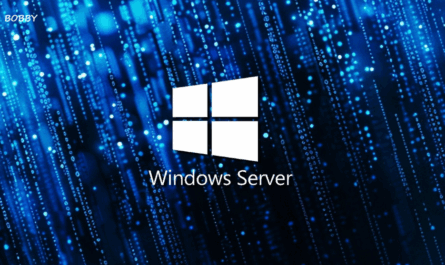When ransomware struck UK retailer Marks & Spencer the financial fallout reached an eye-watering US $403 million—a figure far larger than the typical costs organisations incur from a breach. While the average cost for a data breach globally is about US $10.22 million, the truth is that many organisations can significantly reduce their expenses by adopting a robust, streamlined set of cyber hygiene practices.
In short: prevention really is better than cure. Anticipating and closing off the simple attack vectors—before they become headlines—makes a major difference. A proactive “business-as-usual” checklist of foundational cyber hygiene habits dramatically shrinks the attack surface and boosts resilience.
Why Traditional Cyber Hygiene Isn’t Enough Anymore
According to Sophos, the average recovery cost following a ransomware attack is approximately US $2.73 million.
When ransomware hits, costs escalate rapidly: you don’t just pay to restore systems and data, you often have to call in specialists to investigate how the breach happened, rebuild entire environments, and get your business back online. Meanwhile, your organisation may suffer revenue loss from downtime and reputational damage.
You might also incur:
-
Legal fees, regulatory fines or notifications.
-
Costs to credit-monitor customers whose data was exposed.
-
PR and brand-rehabilitation expenses.
-
Investment in new security tooling and training to prevent a recurrence.
These aggregated hidden and visible costs make a breach far more expensive than just the immediate ransom or clean-up. The evolving reality: older cyber hygiene habits—patching, password management, backups—can still help, but they no longer suffice on their own.
What “Cyber Hygiene” Means Today
In years past, organisations focused on four core pillars of cyber hygiene:
-
Patching systems
-
Managing passwords
-
Controlling access
-
Backing up data
These remain relevant—but they’re now only part of the story. As attacks become more sophisticated—powered by automation, artificial intelligence, supply-chain weaknesses and adversaries exploiting tool-gaps—organisations cannot rely on legacy hygiene alone.
Modern cyber hygiene demands a holistic approach that blends technical controls and human-centric practices across the entire organisation. In other words: it’s not just about IT ticking boxes; it’s about embedding good habits, strong processes and resilient culture enterprise-wide.
The Threat Landscape Has Escalated
Today’s threat actors probe for moving-parts where security controls don’t integrate. They exploit silos—disconnected tools, patch gaps, forgotten credentials. They leverage supply-chains and trusted-partner relationships and capitalise on the fact that many organisations still treat security as a cost centre rather than core business resilience.
For example, supply-chain breaches often cost around US $4.91 million on average—placing them among the highest-cost incident types (second only to malicious insiders).
In this context, good hygiene is the frontline defence—not just patching vulnerabilities, but building layers of resilience and detection so that adversaries find it hard to gain traction.
Five Foundational Cyber Hygiene Practices for 2025
Drawing from guidance by the European Union Agency for Cybersecurity (ENISA) and other industry best-practices, here are five foundational habits organisations should prioritise in 2025:
-
System Hardening
-
Remove or disable unnecessary services and software.
-
Enforce secure configurations (for servers, endpoints, cloud, admin consoles).
-
Use least-privilege principles for service accounts, ensure default credentials are changed and hardening standards are applied.
-
-
Access Management
-
Secure privileged accounts (admin, service, root) as a priority—this is high ROI with minimal complexity.
-
Implement multi-factor authentication (MFA) everywhere possible.
-
Apply role-based access control, timely off-boarding and audited privileges.
-
-
Network Protection
-
Segment networks so that a breach doesn’t give free rein across the organisation.
-
Monitor for lateral movement, abnormal traffic and unknown devices.
-
Use firewalls, intrusion detection/prevention, and ensure remote access (VPN, zero-trust) is tightly controlled.
-
-
Continuous Vigilance / Monitoring
-
Shift from “set and forget” to continuous monitoring for anomalies, vulnerabilities and threats.
-
Employ vulnerability scanning and patch management covering your most critical assets first.
-
Develop security metrics that speak to business outcomes (incident response time, mean-time-to-remediate, security posture trend).
-
-
Backup Resilience & Recovery Planning
-
Ensure backups are frequent, tested and isolated from production systems.
-
Confirm that recovery processes are well rehearsed and align with business-continuity plans.
-
Don’t treat backups as an afterthought—they’re your last line of defence.
-
These five practices form a robust foundation. When implemented together, they create multiple layers of defence—much like locking the front door, reinforcing the windows, installing motion sensors and maintaining alarm systems. Each barrier increases attacker effort and reduces risk.
From Theory to Operational Reality
Embedding these habits into your organisation means more than ticking technical boxes. It calls for:
-
Leadership buy-in and visible commitment (security as a business priority, not just an IT checkbox).
-
Cultural change: security awareness, internal champions, clear individual accountability.
-
Integration of hygiene into business processes—not just IT tasks but BAU activities across teams.
-
A phased rollout approach: assess current maturity, prioritise the highest impact improvements, then execute in manageable waves.
For example:
-
Phase 1: Identify privileged accounts, enforce MFA, isolate backup systems.
-
Phase 2: Harden critical systems, segment network, deploy vulnerability scanning.
-
Phase 3: Establish continuous monitoring, embed security-champions programme, link metrics to business performance.
The key: keep it simple. A repeatable cycle of assess, prioritise, execute builds momentum, demonstrates value and drives wider adoption.
Measuring Success & Showing Value
To ensure your cyber hygiene programme isn’t abstract, tie it to measurable business outcomes:
-
Reduced incident response time (how quickly you detect and act).
-
Lower mean-time-to-remediate vulnerabilities (how fast you fix known weaknesses).
-
Improvements in security posture scores or audit results.
-
Business-impact metrics: fewer days of downtime, fewer costs from incidents, improved customer trust.
By linking hygiene metrics to performance that leadership recognises, you secure buy-in and embed the behaviours more deeply.
Additional Practical Steps
Here are some practical starting points to boost your hygiene foundation:
-
Privileged Access First: Secure admin/service accounts immediately—they’re a big risk with relatively low complexity to fix.
-
Appoint Security Champions: Identify internal advocates who help spread new practices across teams and maintain momentum.
-
Baseline Your Environment: Before major changes, document a “where we are now” snapshot—this baseline lets you show progress clearly.
-
Build a Maturity Model: Define what “good” looks like for your organisation across the five hygiene areas, then map your roadmap.
-
Prioritise Asset-Critical Vulnerability Management: Not all systems are equal—focus first on your crown jewels.
-
Link Metrics to Business Outcomes: When you report to executives, frame metrics in business risk terms, not just technical detail.
-
Consider Outsourcing Where Needed: If internal resources are limited, managed security services (for scanning, monitoring, threat intel) can supplement your team.
The Bottom Line
You cannot stop every possible attack—but by implementing continual vulnerability scanning together with the five fundamental hygiene practices, you’ll protect your organisation from the majority of threats. Don’t wait for a breach to expose gaps. According to various forecasts, cyber-crime costs will rise into the trillions of dollars by 2029—and many of the root causes will lie in basic hygiene deficiencies.
Start with high-impact, manageable changes (like privileged access controls and resilient backups), then build a system of layered defence and continuous improvement. Attackers often exploit the basic, overlooked gaps—so by treating cyber hygiene as non-negotiable (just like locking the doors), you create meaningful resilience.
FAQs
What is cyber hygiene?
Cyber hygiene refers to the ongoing practices and habits that keep systems healthy and secure—such as using strong passwords, applying patches, avoiding suspicious links, and monitoring for anomalies.
What is a good example of good cyber hygiene?
A strong example is implementing multi-factor authentication (MFA) for all users, restricting privileged account access and ensuring backups are tested and isolated.
What counts as poor cyber hygiene?
Examples include using weak or reused passwords, ignoring software updates and patches, sharing admin credentials, and treating backups as a one-time event rather than a frequent, tested process.




